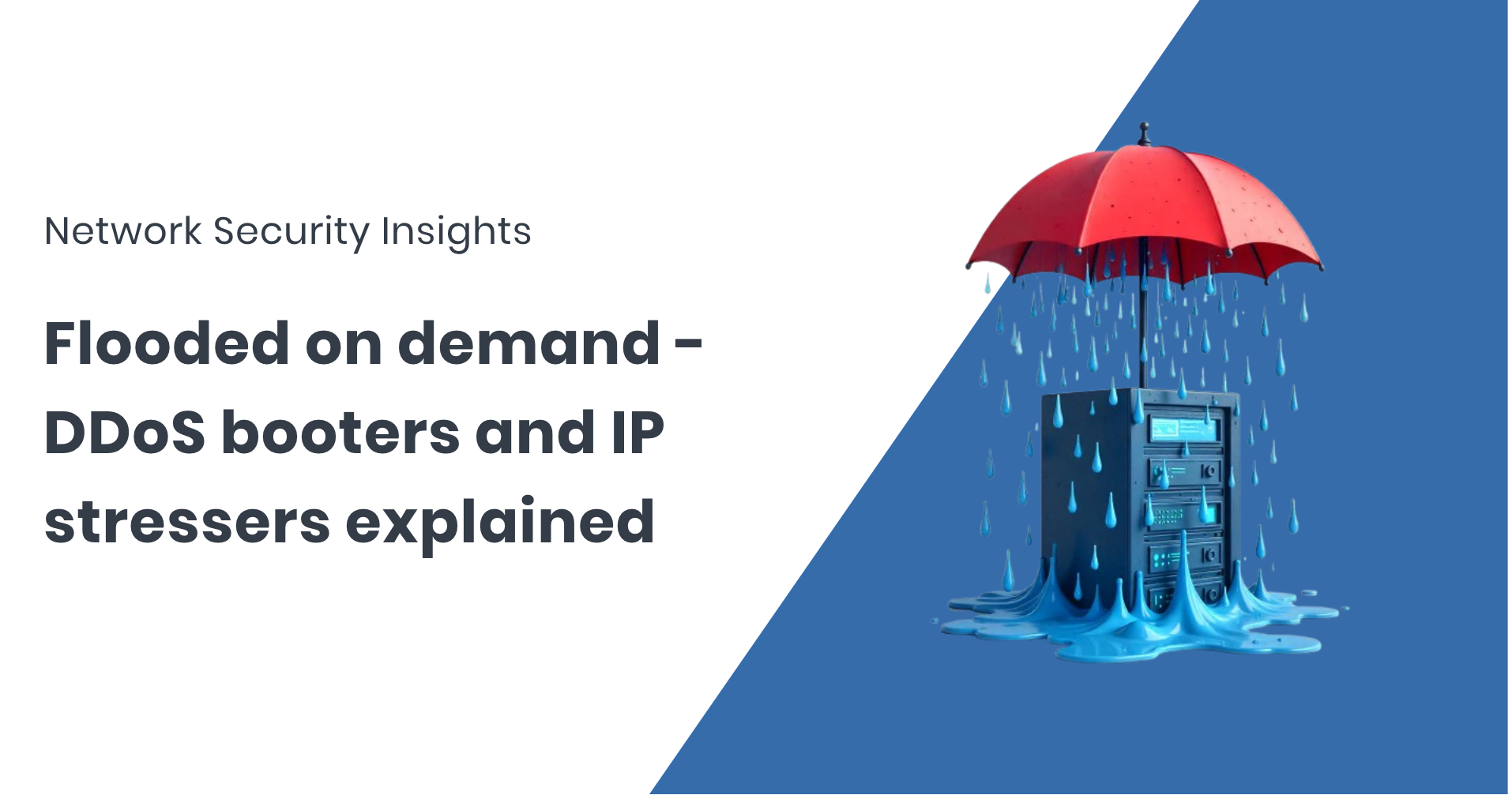
“DDoS for hire” – how anyone can pay to take down a website
You don’t need to be a hacker to launch a cyberattack anymore. These days anyone with £20 and a few minutes can rent a tool online and knock a website offline. These services are called DDoS booters, and while they may sound like gaming slang, the impact they cause is very real.
What’s a DDoS attack?
A DDoS (Distributed-Denial-of-Service) attack floods a website or service with so much junk traffic that it slows to a crawl or crashes completely. It’s like hundreds of people ringing your doorbell non-stop, and you can’t hear the real visitor.
These attacks are often launched using botnets—hijacked devices like routers, cameras, or poorly secured servers. The result? A flood of traffic the target never asked for.
What are Booters and IP Stressers?
IP stresser is a legitimate service used to test how well a system handles heavy traffic. An IT team or a network engineer might run one against their own network to check for weak spots. You can think of it as a stress test for your own environment – using IP stressers is a common practice in cybersecurity.
A booter, on the other hand, is the illegal version of a stresser, designed to attack someone else’s system. While the functionalities of booter services are very similar to those of stressers, the aim is very different: booters are used as DDoS-for-hire. These days, booter services are easy to find, they are slickly packaged like any legitimate digital service, and they are incredibly cheap. Some offer subscription plans, tutorials, and even live support.
Who’s using booters?
Booters are used mostly by low-skill cyber offenders, often called ‘script kiddies,’ people with limited knowledge but access to ready-made attack tools. More experienced attackers may use booters too, sometimes as a distraction while launching more targeted hacks.
Booters often disguise their origin using proxy servers and spoofed IP addresses, making it hard to trace the attacker. Payments are made through crypto or temporary accounts, further muddying the trail.
What types of attacks are launched with booters?
Booters can carry out a wide range of DDoS attacks, including:
- Volumetric floods that jam bandwidth
- Application-layer attacks that target login or search functions
- Reflection and amplification tricks that bounce data off third-party servers
- IoT-based attacks powered by hacked smart devices
Is using a DDoS booter service illegal?
Yes. Using or offering a DDoS booter is illegal in most countries. Authorities like the FBI and Europol regularly take these sites down, but they keep reappearing. Launching a DDoS attack is a crime, regardless of how it is conducted or who is running the booter service.
How to defend against attacks conducted with booter services?
- Monitor traffic for anomalies
- Use up-to-date hardware and software
- Enable rate limiting
- Work with a DDoS defence provider like FastNetMon
- Never pay a ransom; it only encourages more attacks
Booters lower the barrier to cybercrime, making DDoS attacks as easy as buying a streaming subscription. We must understand how they work so we can defend against them.
About FastNetMon
FastNetMon is a leading solution for network security, offering advanced DDoS detection and mitigation. With real-time analytics and rapid response capabilities, FastNetMon helps organisations protect their infrastructure from evolving cyber threats.
For more information, visit https://fastnetmon.com